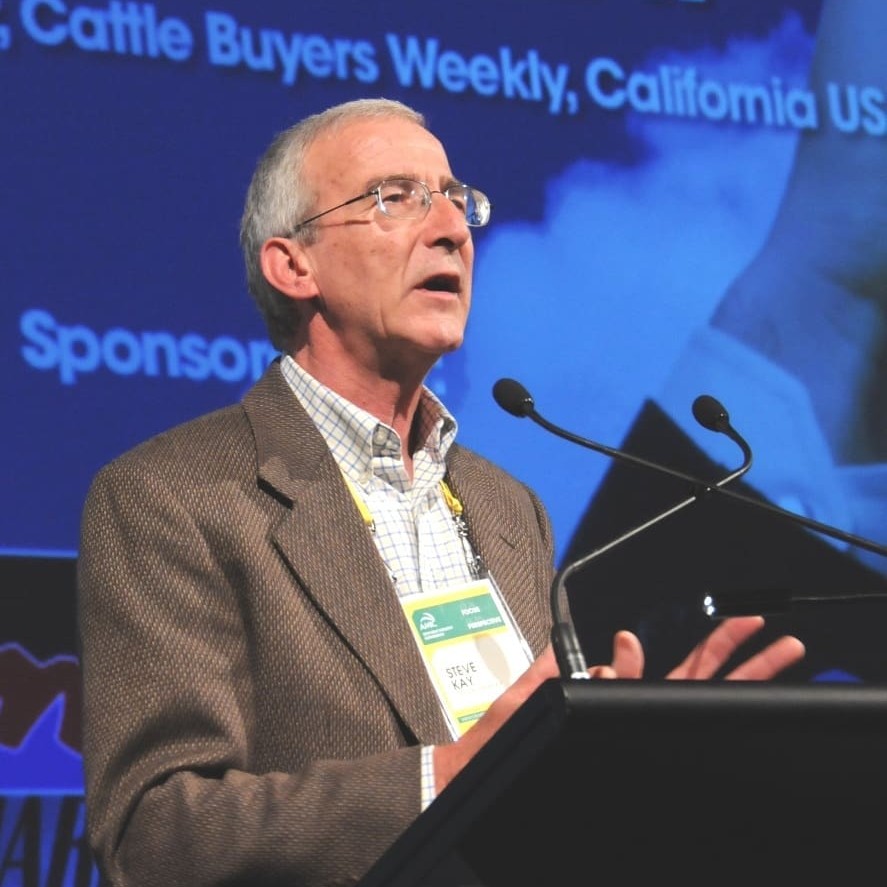A monthly view of the North American beef industry with Steve Kay, publisher of Cattle Buyers Weekly, Petaluma, California.
 The battle over the future of the Australian Agricultural Co as reported on Australian media in recent days appears, at least from here, to bear the hallmarks of both a Greek tragedy and a soap opera.
The battle over the future of the Australian Agricultural Co as reported on Australian media in recent days appears, at least from here, to bear the hallmarks of both a Greek tragedy and a soap opera.
Some accounts suggest a boardroom battle could lead to the breakup of the pastoral and cattle empire.
How sad that such a fate should befall Australia’s oldest listed company. But that’s what sometimes happens when foreign investors have different visions from others as to where a company’s future lies.
From what I’ve read, it’s been suggested that one faction wants to split AA Co in two, with its cattle operations separated from its new $85 million abattoir being built near Darwin.
The plant would be the centre of a new company involved in beef and food processing and trading into Asia, some reports suggested.
Chairman Donald McGauchie, as you no doubt have read, has denied that AA Co’s board is considering splitting the group in two. Only time will tell what happens. But it seems a tragedy that several years of positioning AA Co as possibly the world’s largest integrated cattle and beef entity might be under threat.
Other global beef giants such as JBS, Cargill and Tyson could only wish that they had access to the number of cattle at the ranch or property level that AA Co has.
In the US at least, such access in the form of ownership would not only cost billions of dollars, it would probably not be allowed because of vehement opposition by producers.
In fact, some producers have battled for years to try and persuade Congress to pass a law banning beef processors from owning any cattle prior to immediate slaughter.
Such a law, if passed, would force two of the three largest cattle feeding operations in the world to sell their businesses.
JBS USA, under its Five Rivers Cattle Feeding unit currently has 11 feedlots with a combined feeding capacity of 930,000 head. It finishes about two million grainfed steers and heifers annually. Third largest operation Cargill Cattle Feeders has five feedlots with a combined 350,000 head of capacity. It feeds more than 800,000 head annually.
Tyson, the largest fed cattle processor, owns no feedlots. But like JBS, Cargill and others, it partners extensively with cattle feeding operations large and small through a variety of marketing agreements.
The main reason for such agreements, which some producers strongly opposed in the 1990s, is that they ensure a steady flow of cattle into processing plants and help processors control the quality of the cattle and thus the beef they produce.
Maybe the cattle that AA Co produces fall into a different category. But it seems that under any circumstance, AA Co would have an advantage over other entities by being able to control the supply and quality of its cattle all the way from its properties to consumers’ plates in Asia.
One obvious advantage would be the ability to tell those consumers exactly where that beef came from and assure them of its safe and wholesome quality. Maybe AA Co will remain one entity. It seems a giant backward step if its splits up.
Bankruptcy for new plant
Continuing the theme of foreign investors, a brand-new beef processing company here in the US has hit a financial brick-wall after only eight months in operation.
Northern Beef Packers in South Dakota spent seven years planning and building a plant designed to process 1500 cattle per day.
After multiple delays and legal and financial problems, it finally started operations last October. But it never processed more than 420 head per day and halted operations on July 22 as it filed for Chapter 11 bankruptcy protection.
Basically, it had run out of money to buy cattle or pay its workers, after burning through US $150 million in construction costs and working capital.
Northern Beef was always going to struggle financially and in terms of available cattle supplies. Even around the time that plans for its new plant were getting off the ground in 2007, the US cattle herd had completed three years of extremely modest expansion and then returned to contraction mode.
The herd has now declined every year since 2007, losing 7.7 million cattle along the way. More telling, beef cow numbers have declined by just over four million head. But South Dakota state officials and other backers of the plant seemed oblivious to all this.
The plant’s difficulty in attracting investors should also have rung alarm bells. It took instead the carrot of a green card (permanent residency in the US under a federal EB-5 program) to lure investors from South Korea and China to provide US$80 million in investments. These investors presumably had no idea how difficult it is to start and operate a beef processing plant.
The reality is that new beef plants anywhere in the world are more expensive than ever to build and operate. Food safety costs are enormous and every other cost, from wages to energy to packaging, keeps increasing.
New plants also lose money for two years before possibly breaking even in the third year. I wonder if the AA Co board has any idea how much money it could lose in Darwin.
- Beef Central’s regular columnist Steve Kay is a guest speaker at the upcoming Australian Meat Industry Council conference on 17-19 September.
